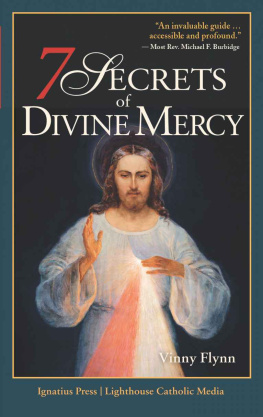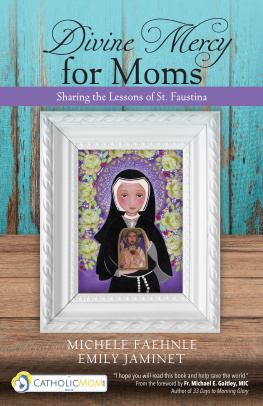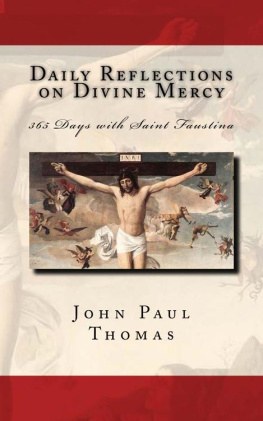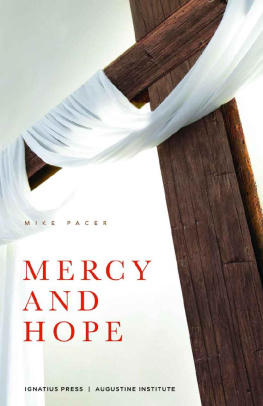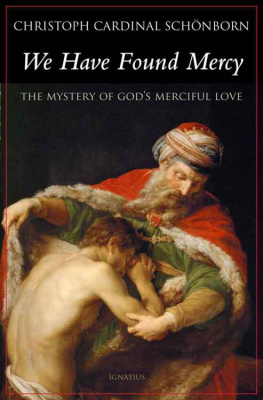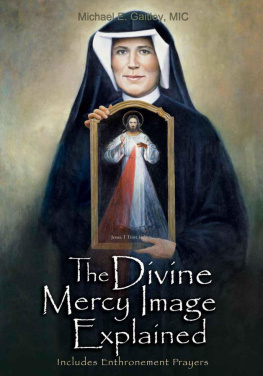The Divine Mercy Message and Devotion
Revised Edition
with
Selected Prayers from the Diary of St. Maria Faustina Kowalska
Fr. Seraphim Michalenko, MIC
with Vinny Flynn
and Robert A. Stackpole 
2012
Revised edition copyright 2001 Marian Fathers of the Immaculate Conception of the B.V.M.; previous editions copyright 1995; 1993; 1991 Marian Helpers. Copyright 1984; 1981 Marian Press. All rights reserved. No part of this booklet may be reproduced or transcribed in any form without written permission from the Association of Marian Helpers. For information, write Marian Helpers Center, Stockbridge, MA 01263 Attn: Copyright Permissions. For this booklet or other Divine Mercy materials, call toll free: 1-800-462-7426 or visit our website: www.marian.org .
For this revised edition of The Divine Mercy Message and Devotion
Ecclesiastical Approval of Very Rev. Walter Dziordz, MIC, Provincial Superior of St. Stanislaus Kostka Province of the Marians of the Immaculate Conception, Stockbridge, MA.
For texts from the English Edition of Diary of St. Maria Faustina Kowalska :
NIHIL OBSTAT:
= George H. Pearce, SM
Former Archbishop of Suva, Fiji
IMPRIMATUR:
= Joseph F. Maguire
Bishop of Springfield, MA
April 9, 1984
The NIHIL OBSTAT and IMPRIMATUR are a declaration that a book or pamphlet is considered to be free from doctrinal or moral error. It is not implied that those who have granted the NIHIL OBSTAT and IMPRIMATUR agree with the contents, opinions or statements expressed.
Front and back cover art of The Divine Mercy and St. Faustina, Marian Fathers of the Immaculate Conception of the B.V.M.
Inside art and photos: All copyright Marian Fathers of the Immaculate Conception of the B.V.M., except by LOsservatore Romano .
ISBN: 978-159614-259-6
Declaration
In accordance with the decrees of Pope Urban VIII, we wish to state that only private and human faith is attributed to the revelations, extraordinary graces, and incidents that are described in this booklet. We declare our faithfulness to Holy Mother Church and her judgments in all the matters contained herein. Our desire is to offer the faithful an opportunity to believe in matters that are considered helpful for salvation.
After scrupulously examining the writings of Sr. Maria Faustina Kowalska and finding them without significant error, the Church declared her heroic virtues. With the required miracles, Pope John Paul II then beatified (1993) and canonized (2000) her. At her canonization, he also drew on the insight from her writings that the Feast of Mercy should be instituted, stating: It is important that we accept the whole message that comes to us from the word of God on this Second Sunday of Easter, which from now on throughout the Church, will be called Divine Mercy Sunday.
In private revelations like those given to St. Faustina, no new doctrine is offered, as Fr. Karl Rahner, SJ, explains in Theological Investigations (Vol. 3, pp. 338-339). But they do provide extraordinary guidance for the Church in a time of great and important need. In this case, Pope John Paul II said at St. Faustinas canonization: By this act, I intend to pass this message on to the new millennium. In that light, we believe now is the time for mercy.
Pope John Paul II at the Tomb of St. Faustina
On June 7, 1997, Pope John Paul II prays at the tomb of [St.] Faustina in Lagiewniki, Poland.
Pope John Paul II visited the tomb of St. Maria Faustina Kowalska in Lagiewniki, Poland, on June 7, 1997. There he said:
There is nothing that man needs more than Divine Mercy that love which is benevolent, which is compassionate, which raises man above his weakness to the infinite heights of the holiness of God.
In this place, we become particularly aware of this. From here, in fact, went out the message of Divine Mercy that Christ Himself chose to pass on to our generation through [St.] Faustina.
And it is a message that is clear and understandable for everyone. Anyone can come here, look at this image of the merciful Jesus, His Heart radiating peace, and hear in the depths of his own soul what [St.] Faustina heard: Fear nothing; I am always with you (Diary of St. Maria Faustina Kowalska , 586). And if this person responds with a sincere heart, Jesus, I trust in You, he will find comfort in all his anxieties and fears.
I come here to commend the concerns of the Church and of humanity to the merciful Christ. On the threshold of the third millennium, I come to entrust to Him once more my Petrine ministry Jesus, I trust in You!
Introduction
This booklet presents the message of The Divine Mercy and the special forms of devotion to The Divine Mercy that are outlined in the Diary of St. Faustina. First published in 1981, the booklet has undergone several revisions over the years, including changes in its title and contents. It has become known throughout the world as the Devotion Booklet.
Devotion and Devotions
Devotion, in the root sense of the word, means consecration giving of oneself completely dedication by solemn vow. In a religious context, devotion is an attitude of caring about God and all that God cares about. It involves a decision and a commitment that permeates our lives, giving direction and form to all our actions.
Among these actions are what we call devotions: specific religious attitudes, prayers, and practices that express and nurture our devotion our total consecration to God. Thus, devotions can be of very real value, both as a witness to others and as a fruitful way of growing in personal holiness.
The Constitution on the Sacred Liturgy , presented by the Second Vatican Council, teaches that popular devotions of the Christian people are warmly commended as long as they are in accord with the laws and norms of the Church.
A New Focus on Mercy
From the diary of a young Polish nun, named Sr. Faustina Kowalska, a special devotion to the mercy of God is spreading throughout the world.
The message is nothing new, just a reminder of what the Church has always taught: that God is merciful and forgiving and that we, too, must show mercy and forgiveness.
But, in the Divine Mercy devotion, the message takes on a powerful new focus, calling people to a deeper understanding that Gods love is unlimited and available to everyone especially the greatest sinners: The greater the sinner, the greater the right he has to My mercy ( Diary, 723).
Some of the elements of this new focus include a sacred image of the merciful Savior, several new prayers, and a cornucopia of promises. But the main elements are trust and deeds of mercy.
Devotion to The Divine Mercy involves a total commitment to God as Mercy. It is a decision to accept His mercy with thanksgiving, to trust completely in Him, and to be merciful as He is merciful.
The devotional practices proposed in the Diary of St. Faustina and set forth in this booklet are completely in accordance with the teachings of the Church and are firmly rooted in the Gospel message of our Merciful Savior. Properly understood and implemented, they will help us grow as genuine followers of Christ.
Lip Service or Merciful Heart?
There are two scriptural verses that we should keep in mind as we involve ourselves in these devotional practices:
1. This people honors me with their lips, but their hearts are far from me (Is 29:13); 2. Blessed are the merciful, for they shall obtain mercy (Mt 5:7).


